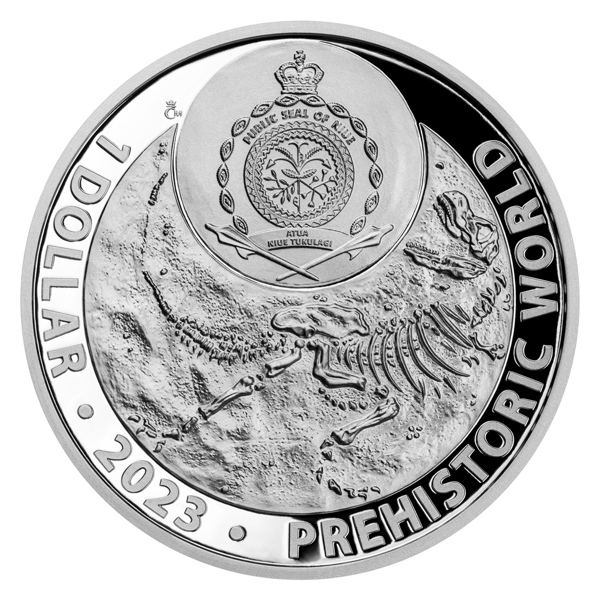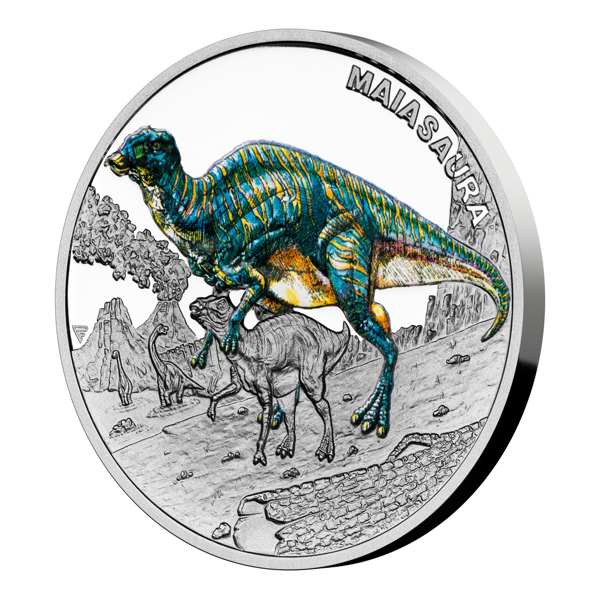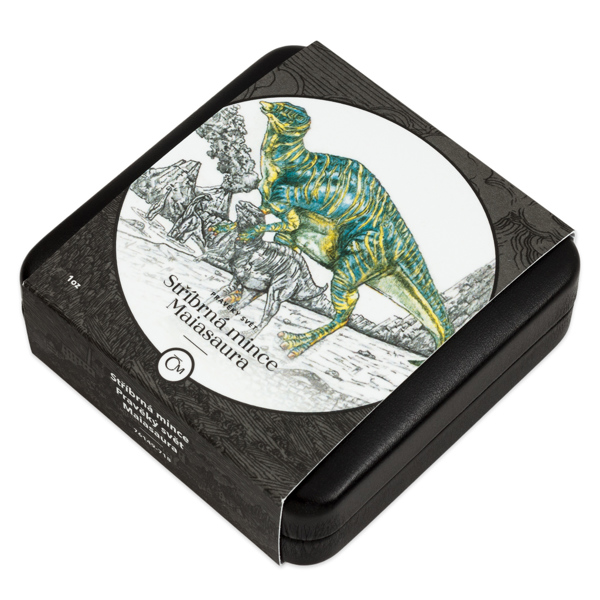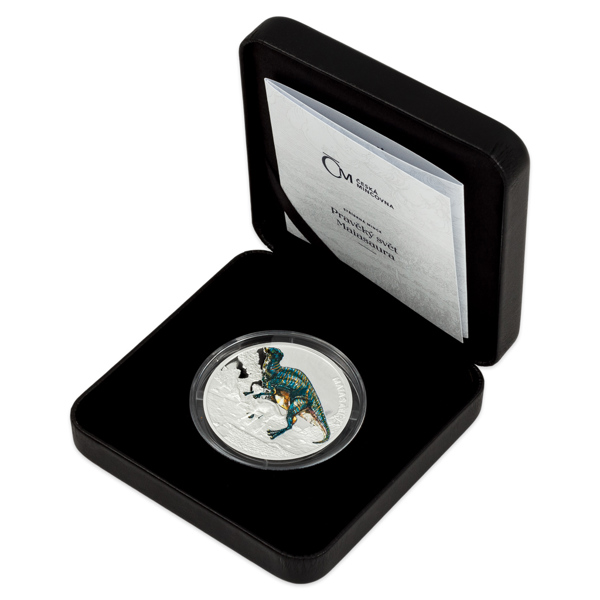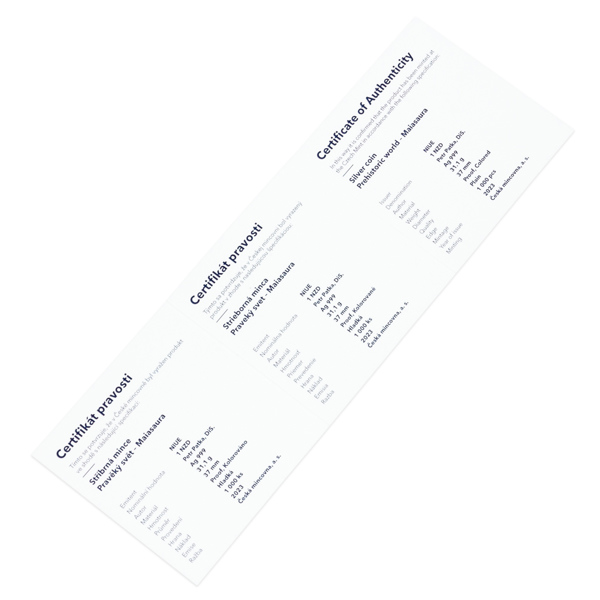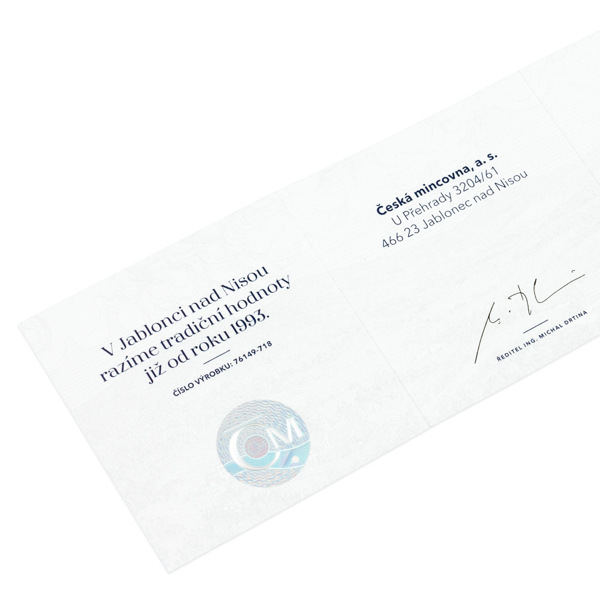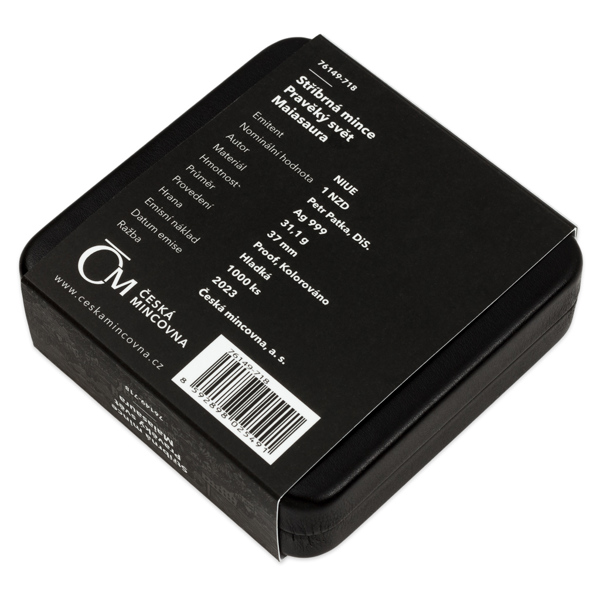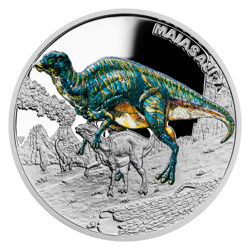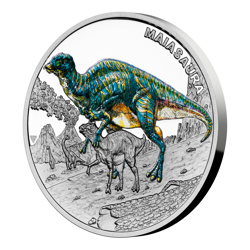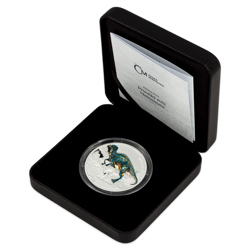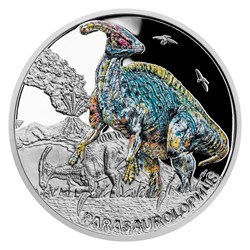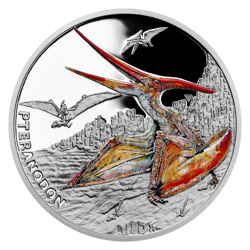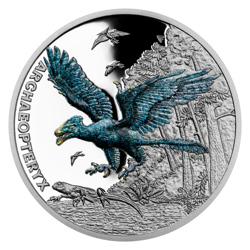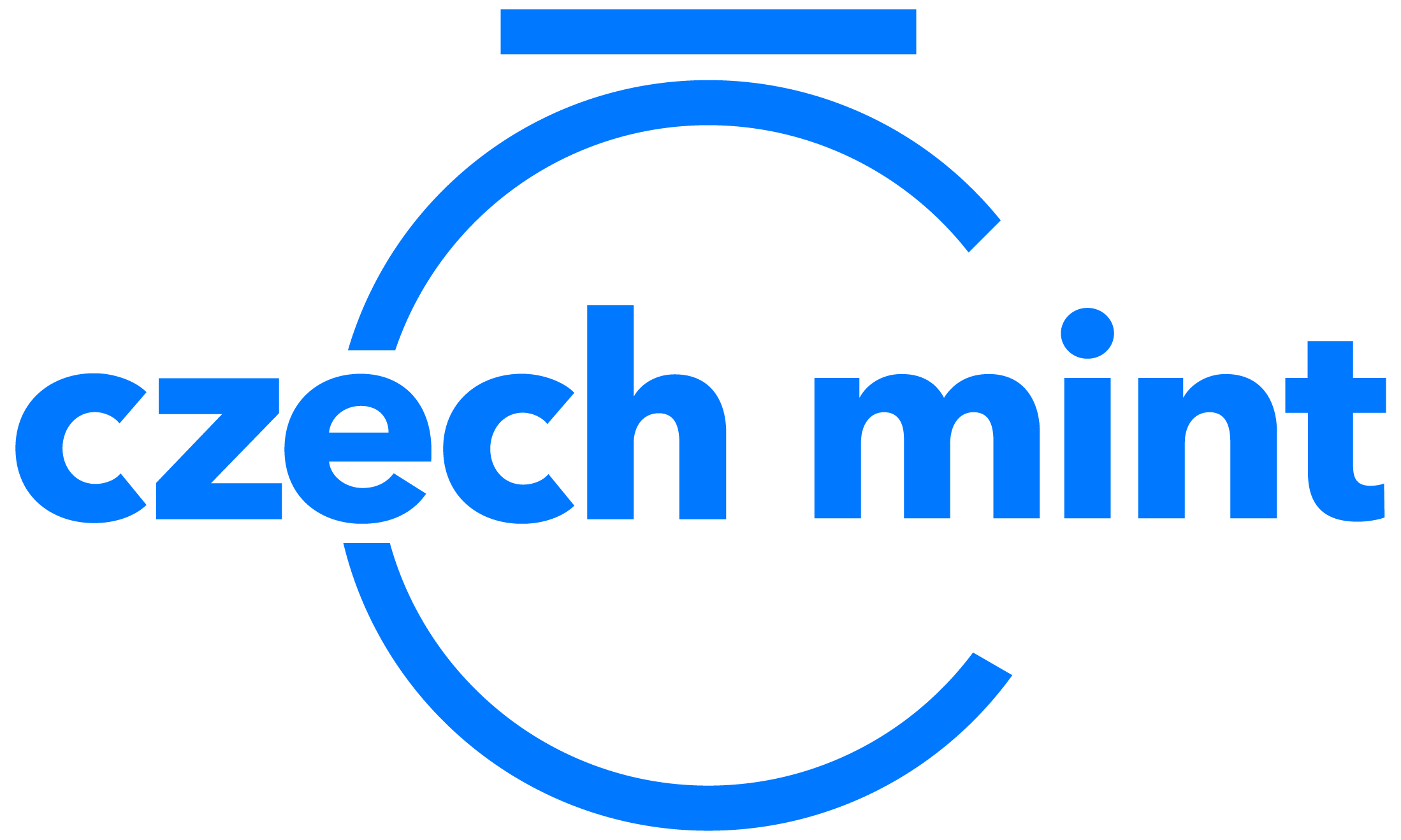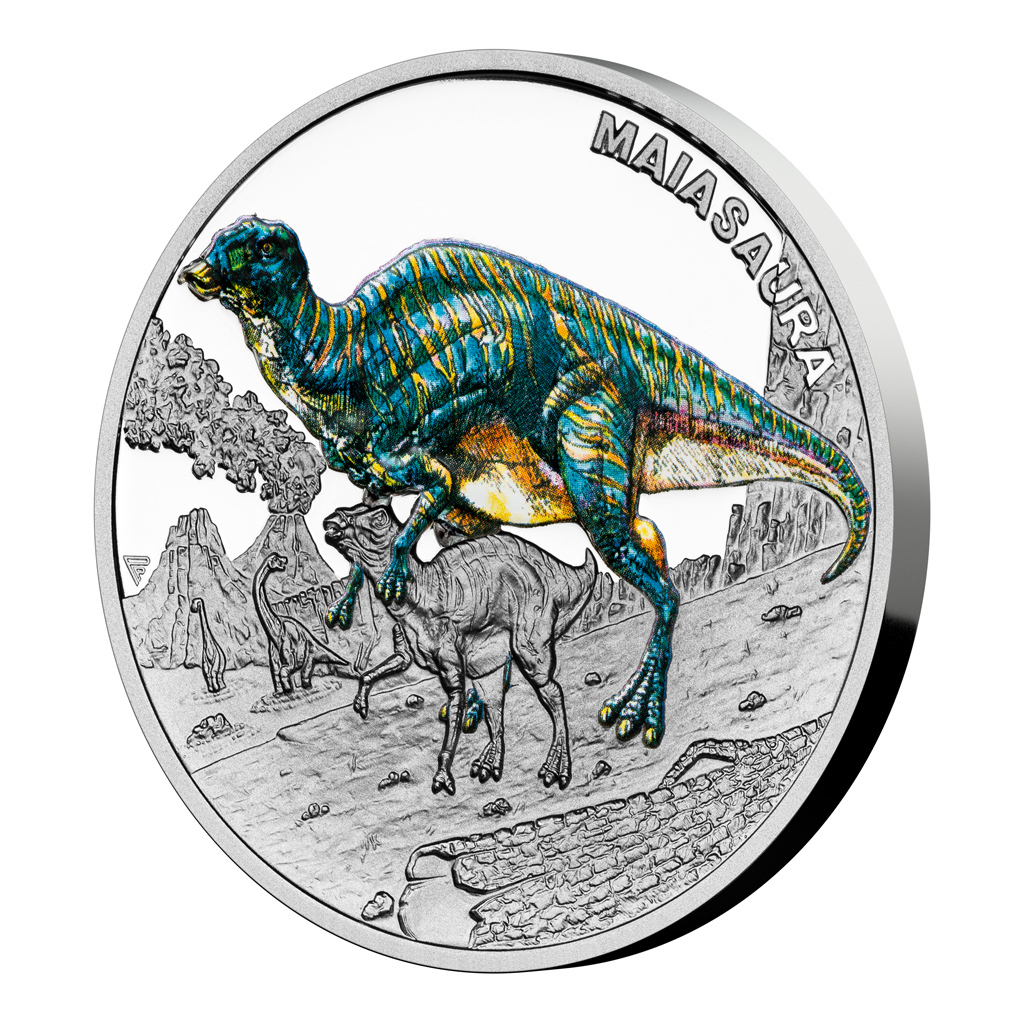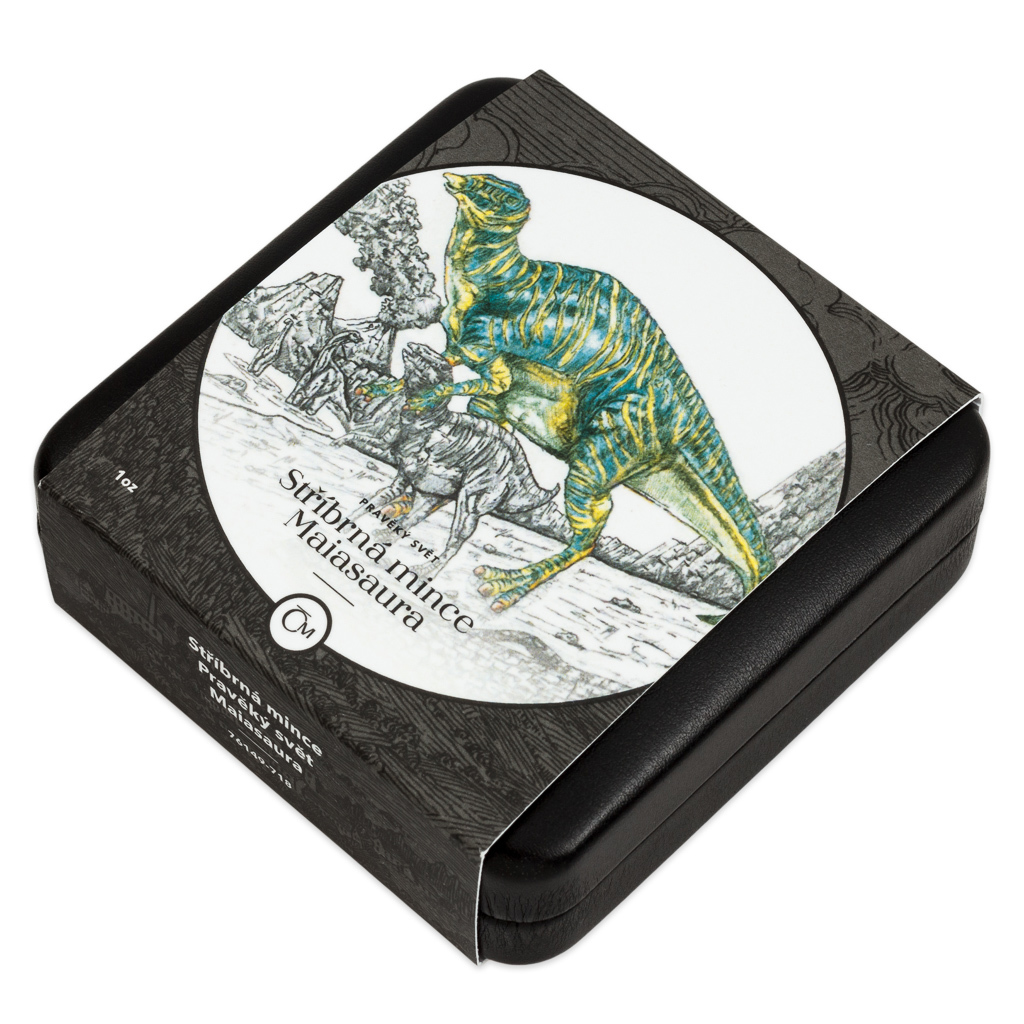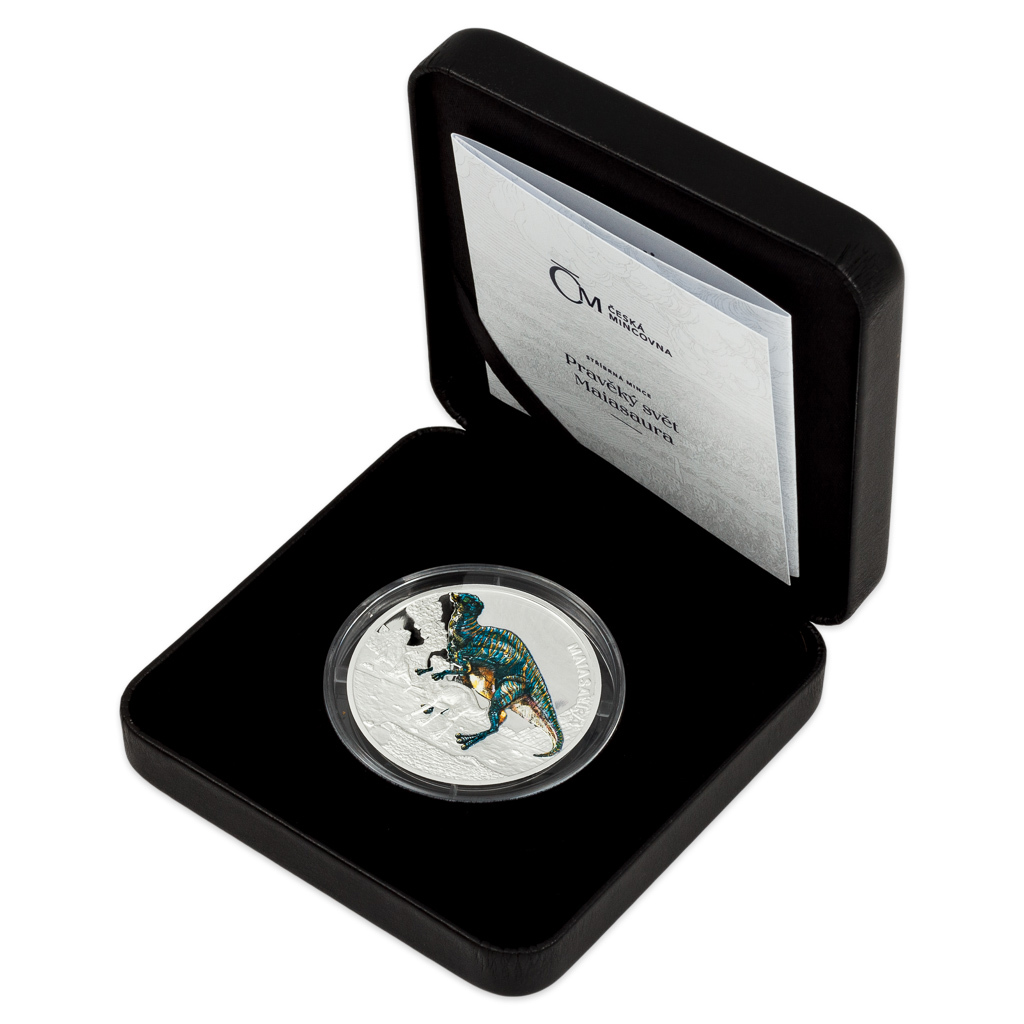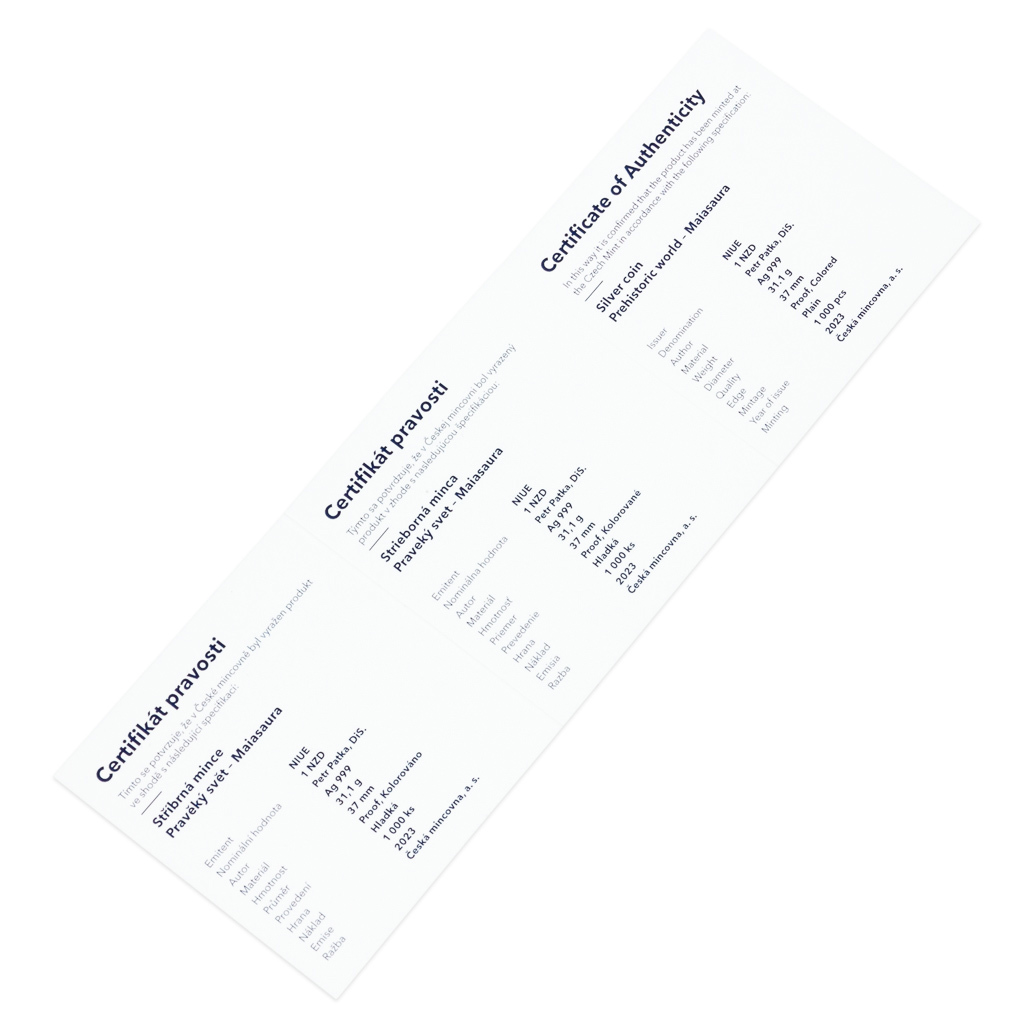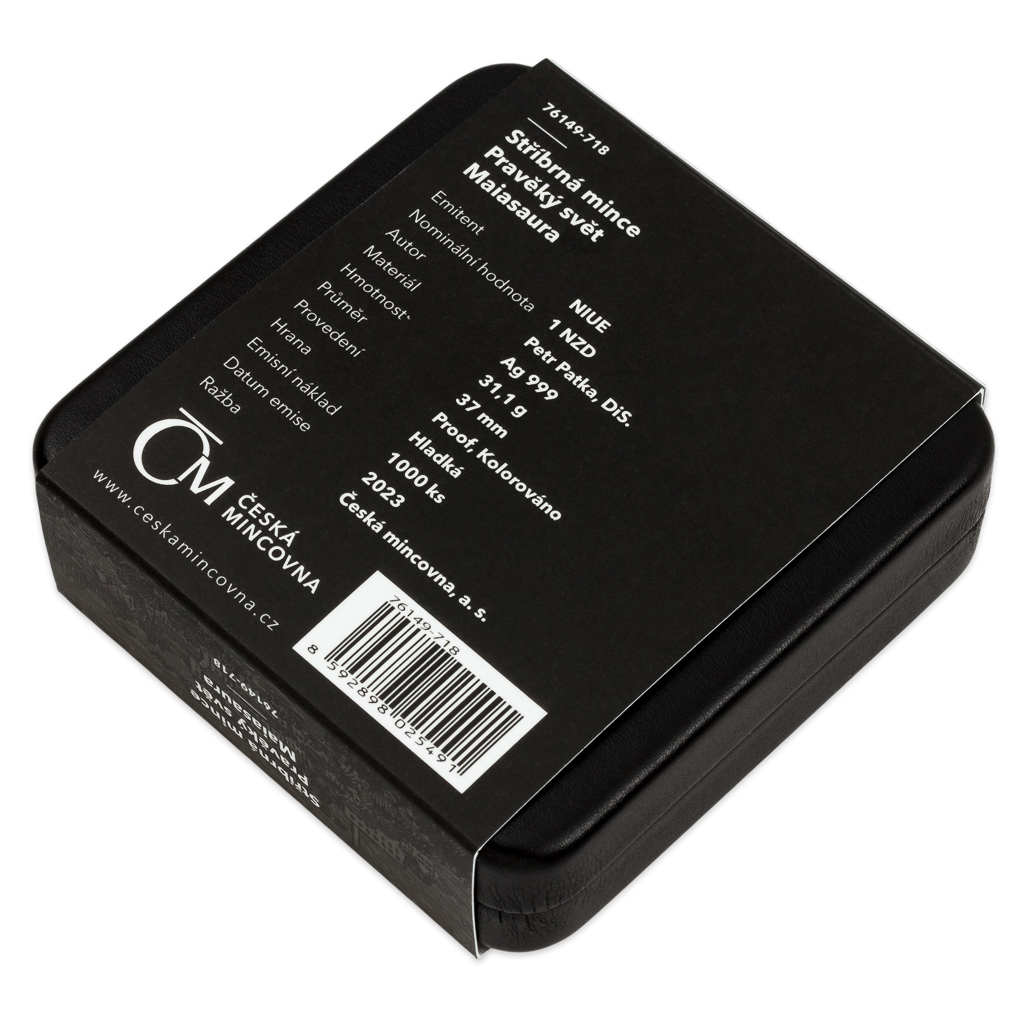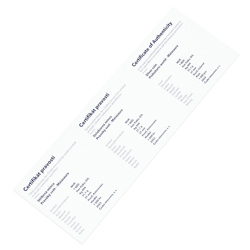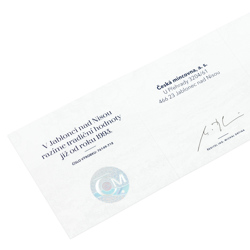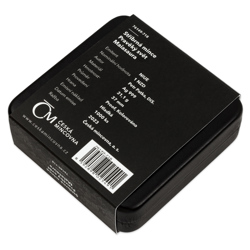Silver coin Prehistoric world - Maiasaura proof
Personal pickup at the store
Prehistoric world
The sixth Mesozoic lizard to appear on the Czech Mint's silver coin from the Prehistoric World series is the Maiasaura.
The seven-metre-long maiasaura belonged to the duck-billed hadrosaurs, but unlike many other members of this group, it did not have a crest on its head. It lived in herds up to a thousand individuals and nested in large colonies, which gave it safety from carnivores. The discovery of a fossilised colony with many nests, eggs and skeletons provided the first evidence that dinosaurs cared for their young. Each nest contained up to 40 eggs, which were warmed by rotting vegetation. Adult dinosaurs fed their offspring during their first year. When the young grew to 1.5 metres in length, they left the nest.
The reverse side of the coin was dedicated by the medal maker Petr Patka, DiS., to the depiction of a duck-billed maiasaur in vivid colours, which were achieved using colouring technology. No photographs or computer graphics were used as a template - the author of the coin created an original painting. The embossed relief presents a grown-up baby maiasaur in the Mesozoic wilderness. The composition of the reverse side is concluded by the inscription MAIASAURA. The obverse side of the coin, which is common to the entire cycle, bears a fossilised skeleton of a tyrannosaur together with the English inscription PREHISTORIC WORLD. Since the licence to issue the commemorative coins of the Czech Mint is granted by the Pacific island of Niue, the obverse side bears its necessary elements - the national emblem, the nominal value of 1 DOLLAR (NZD) and the year of issue 2023.
You can save the coin dedicated to the dinosaur in a collector's album that is full of interesting facts about the life of giant lizards.
 čeština
čeština
 slovenčina
slovenčina
 english
english

